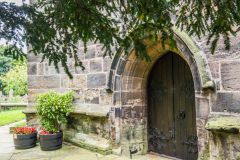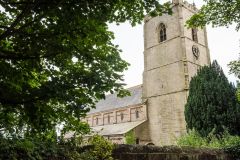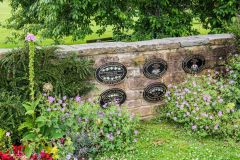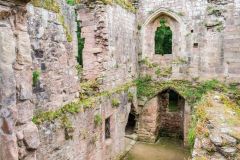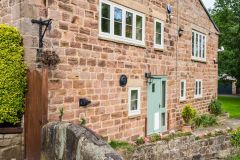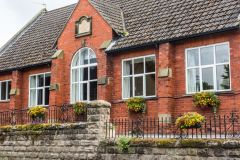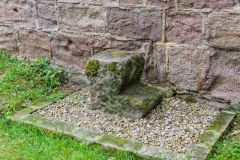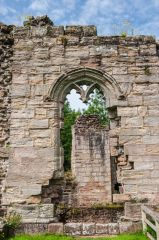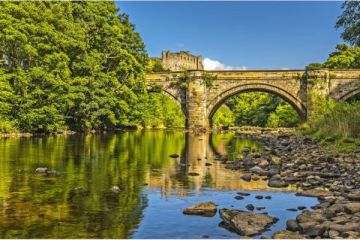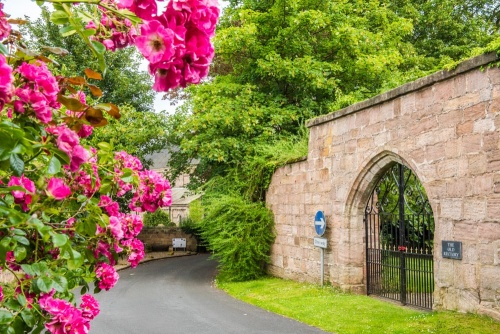
Spofforth is a pretty village near Harrogate, best-known for its 13th-century castle. The village name comes from a combination of 'spa' and 'ford', meaning a crossing place by a well. In this case, the ford was a crossing of the River Crimple.
History
Spofforth is first mentioned in the Domesday Book of 1086 when William de Percy held the manor. There was probably a settlement here long before the coming of the Normans, however, as evidenced by Bronze Age battle axes found locally. William de Percy built a fortified manor house shortly after the Norman Conquest and the Percy family lived here for the next three centuries. This manor house was the forerunner of Spofforth Castle.
By tradition, the terms of the Magna Carta were drawn up at Spofforth Castle in 1215 before they were presented to King John at Runnymede.
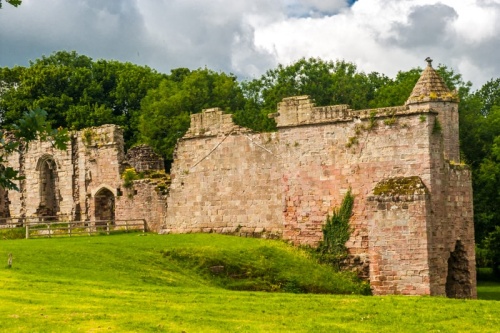
Spofforth Castle
The Percy's manor house was fortified in 1308 and rebuilt in 1559 with comfort in mind. Unfortunately, it was badly damaged in the Civil War and never restored. In 1308 Henry Percy obtained a license from Edward II to crenellate the castle, but in the following year (1309) the Percy family acquired Alnwick Castle in Northumberland and Spofforth Castle was used only occasionally.
The Percy family supported the Lancastrian cause in the Wars of the roses. In 1461 Henry Percy died in the bloody Battle of Towton and the castle was sacked and burned by victorious Yorkist soldiers. Stone from the ruined castle was used to build many of Spofforth's buildings.
Behind the castle is a Victorian railway viaduct, a reminder that Spofforth was once on the busy rail line linking Leeds and Harrogate to York.
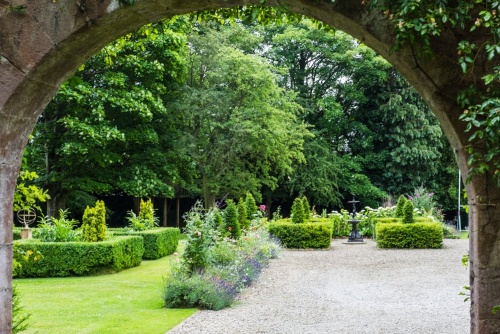
The oldest part of the ruined structure is a 13th-century undercroft below the great hall. North of the hall is a two-storey chamber reached by a polygonal stair turret. Visitors over the years have reported seeing a mysterious bluish figure falling from one of the towers, but who, or what this spectre might be is unknown.
We do, however, know about a later native of Spofforth. Laurence Eusden, the son of Spoffforth's rector was baptised in All Saints Church in 1688. Eusden was named Poet Laureate in 1718, though he was never popular amongst his contemporaries. Another figure with an artistic career was John Hebden, a well-known composer, cellist, and bassoon player, who was baptised here in 1712.
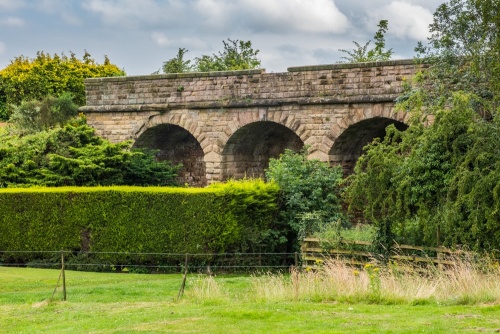
All Saints Church
The oldest parts of the parish church of All Saints date to the 12th century. The tower is a 15th-century addition. The church was comprehensively rebuilt in Norman Revival style in 1855. In the chancel is a memorial to Sir Robert de Plompton (d 1323) with an effigy of Plompton in armour.
Blind Jack of Knaresborough
In the churchyard is the grave of John 'Blind Jack' Metcalfe of Knaresborough. Metcalfe, born in 1717, suffered an attack of smallpox at the age of six. He survived but was left blind. He refused to let the ailment stop him, and carved out a remarkable career as an engineer and prolific road-builder. One of his highest-profile accomplishments was the Boroughbridge to Harrogate turnpike road in 1758.
Outside the churchyard is a mounting stone, used to help elderly or ill people mount or dismount from a horse or cart. The mounting stone was also used by women riding sidesaddle, as it enabled them to mount while maintaining a measure of modesty.
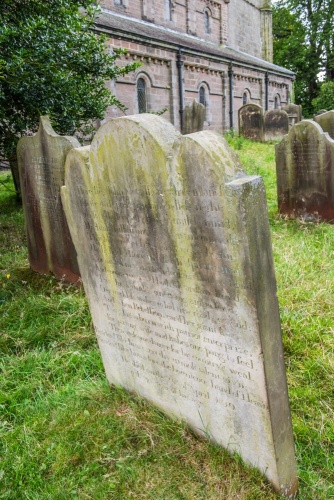
Near the churchyard is the Old Rectory, for many years home to a descendant of Charles Dickens. The Old Rectory is enclosed within a high boundary wall with a striking double archway. One famous rector of Spofforth was The Hon. Rev. William Herbert (1778-1847). Herbert was an avid botanist whose experiments in hybrid cultivation was honoured by having the genus herbertia named for him. His studies of plant hybrids formed part of Charles Darwin's theories in his work On the Origin of Species.
While serving as Rector of Spofforth, Herbert developed the Spofforth Crocus, which can be found in flower around the Old Rectory and planted in several places around the village. Also in the Old Rectory Garden is a horse chestnut tree planted in 1704 to commemorate the British victory at the Battle of Blenheim.
Another nearby house is the Corn Mill, mentioned in the Domesday Book. The mill can be reached over a small packhorse bridge.
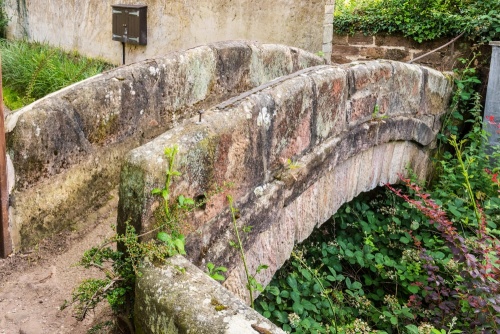
Then there is the Angel House, built in 1590 and boasting a secret priest hole where Roman Catholics priests could hide from the authorities. Closer to the castle is the Manor House, which originally served as the residence for the castle steward. Tradition says that when the castle was under attack during the Battle of Marston Moor in 1644 cannonballs fired from nearby Crosper Rocks embedded themselves in the Manor House roof, where they were later discovered.
Spofforth boasts three popular inns, a village store and post office, and a newsagents.
Just outside Spofforth is Stockeld Park, an 18th-century mansion in Palladian style. It was the home of William Middelton, who was at the centre of a society scandal in 1795 when he launched divorce proceedings against his wife Clara, accusing her of an affair with his groom. Middelton won his case, divorced Clara, and immediately moved to a second family home near Ilkley, leaving the house empty for two decades.
Getting There
Spofforth is on the A661 halfway between Harrogate and Wetherby. We didn't see any dedicated visitor parking but it was fairly easy to find a parking place along a side street off the A661.
About Spofforth
Address: A661,
Spofforth,
Yorkshire,
England
Attraction Type: Village
Location: On the A661 between Wetherby and Harrogate
Website: Spofforth
Location map
OS: SE362510
Photo Credit: David Ross and Britain Express
HERITAGE
 We've 'tagged' this attraction information to help you find related historic attractions and learn more about major time periods mentioned.
We've 'tagged' this attraction information to help you find related historic attractions and learn more about major time periods mentioned.
Find other attractions tagged with:
NEARBY HISTORIC ATTRACTIONS
Heritage Rated from 1- 5 (low to exceptional) on historic interest
Spofforth Castle - 0.4 miles (Castle) ![]()
Plumpton Rocks - 1.8 miles (Garden) ![]()
Wetherby, St James Church - 3.1 miles (Historic Church) ![]()
St Robert's Cave and Chapel - 3.1 miles (Historic Church) ![]()
Goldsborough Hall Garden - 3.4 miles (Garden) ![]()
Chapel of Our Lady of the Crag - 3.4 miles (Historic Church) ![]()
Mother Shipton's Cave - 3.5 miles (Countryside) ![]()
Courthouse Museum - 3.7 miles (Museum) ![]()
